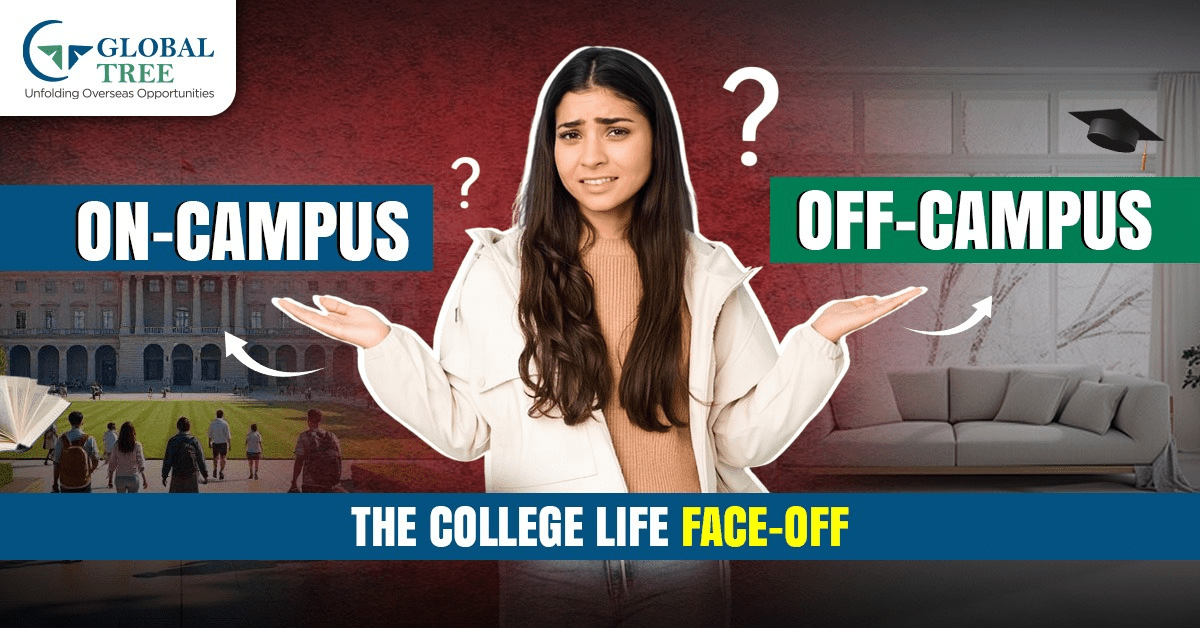Australian Student Visa Complete Process & Explanation - Pathway to a New Journey

- Introduction
- What is an Australian Student Visa?
- Types of Australian Student Visas:
- What is an Australian Subclass 500 Visa?
- Temporary Graduate Visa (subclass 485 Visa):
- Other Visas
- What are the benefits of Obtaining an Australian Student Visa for an International Student?
- Am I Eligible for an Australian Student Visa?
- IELTS Requirement for Australian Student Visa
- Australian Student Visa Document Checklist
- What is the Australian Student Visa Procedure for an International Student?
- Where to apply for an Australian Student Visa?
- What is the Student Visa Expense for Australia?
- What is the Australian student visa duration of stay?
- What is the Australian Visa Expiration Date?
- What is the Australia Student Visa Wait Time from India?
- Is Gap Acceptable for an Australia Study Visa?
- What is the passport validity for Australian Student Visa?
- What is the Australian Study Visa Success Rate 2023?
- What is the Australian Student Visa Rejection Rate 2023?
- Which countries can I Travel with an Australian Student Visa?
- FAQS- Frequently Asked Questions for Australian Student Visas
Introduction
Let’s sail through the coral dream!
Wide open stretches of outback bush, kangaroos, koalas, and clean air and water come to mind when people think of Australia.
Australia offers considerably more than what you would anticipate. Due to its welcoming, laid-back culture, top-notch educational system, and high standard of life, many international students choose to study in Australia.
Australia provides a variety of alternatives if you are interested in continuing your education there, getting a degree from a top university, or jumpstarting your career.
In terms of quality of life, academic success, and support for international students, Australia is not easy to beat, whether you choose to pursue an MBA there, an engineering degree, a humanities degree, or an English language course.
What is an Australian Student Visa?
An Australian student visa is a type of visa that allows you to study in Australia for a specified period.
Australia has many short-term, temporary, and temporary graduate visas. The most common type of visa is the “Australian Student Visa (Subclass 500)”.
“What is an Australian Subclass 500 Visa?”
Types of Australian Student Visas:
There are different types of student visas depending on the level and duration of your course:
What is an Australian Subclass 500 Visa?
This is the most common visa for international students who want to study in Australia.
Full-time Course: it lets you enrol in a full-time course at an eligible education provider, travel in and out of Australia, and work for up to 48 hours per fortnight while your course is in session and unlimited hours during scheduled course breaks.
Dependents: You can also bring your family members with you as dependents.
Validity: This visa is valid for up to five years, depending on your course length and enrolment date.
Genuine Temporary Entrant (GTE) requirement: You must show that you have a genuine intention to stay in Australia temporarily to study or to accompany a student as a dependent.
Duration of Stay? Travel into and out of Australia during the five-year maximum term of your education in Australia.
Work Equation: While your program of study is in session, you can take up to 48 hours every fortnight. There are no work-hour restrictions for students who have begun a master's by research or doctoral degree.
Australian Student Visa Subclass 500 Conditions or Requirements:
- Financial requirement: You must have enough money to pay for your course fees, living expenses, travel costs, and health insurance for yourself and your family members while in Australia.
- English proficiency requirement: You must provide evidence of your English language skills, such as an IELTS, TOEFL, PTE, or CAE test prep score unless you are exempt from this requirement.
- Health requirement: You must meet certain health standards and undergo a health examination if required. You must also have adequate health insurance for the duration of your stay in Australia, such as the Overseas Student Health Cover (OSHC).
- Character requirement: You must be of good character and provide a police certificate from each country you have lived in for 12 months or more in the last 10 years.
- Other requirements: You must also provide a Confirmation of Enrolment (CoE) from your education provider, evidence of your academic qualifications and work experience, details of your welfare arrangements if you are under 18 years old, and any other documents requested by the Department of Home Affairs.
Temporary Graduate Visa (subclass 485 Visa):
This is a visa that allows you to live and work in Australia temporarily after you have completed your studies. It is a type of post-study visa in Australia. It has two streams:
- Graduate Work stream: This is for international students who have completed a qualification that is related to an occupation on the Skilled Occupation List (SOL). This visa is valid for 18 months and lets you work in any occupation and location in Australia.
- Post-Study Work stream: This is for international students who have completed a bachelor’s degree or higher qualification from an Australian education provider, regardless of their field of study. This visa is valid for two to four years, depending on your qualification level, and lets you work in any occupation and location in Australia.
- Here is a detailed article on the Temporary graduate visa subclass 485, its eligibility criteria and benefits.
Other Visas
-
Independent ELICOS Sector visa (subclass 570)
This visa is intended for foreign students who wish to live in Australia to pursue full-time education in an ELICOS (English Language Intensive Course for Overseas Students).
-
Schools Sector visa (subclass 571)
This visa is granted to foreign students who wish to continue their academic studies in Australia on a full-time basis. A primary school course, a secondary school course, including junior and senior secondary, or an authorised secondary school exchange program may be the subject of the course of study.
-
Vocational Education and Training Sector visa (subclass 572)
This visa is intended for foreign students who wish to remain in Australia to pursue a full-time vocational education and training program, such as a Certificate I, II, III, or IV, a Diploma, or an Advanced Diploma.
-
Higher Education Sector visa (subclass 573)
This visa is intended for foreign students who wish to remain in Australia to pursue a full-time course of higher education, such as a bachelor's degree, graduate certificate, or graduate diploma.
-
Postgraduate Research Sector visa (subclass 574)
This visa is intended for international students who desire to stay in Australia to do doctoral-level postgraduate research.
-
Non-Award Sector visa (subclass 575)
This visa is intended for foreign students who wish to remain in Australia to pursue non-award foundation studies or another full-time program (or components of a program) without the possibility of earning an Australian award.
-
Foreign Affairs or Defence Sector visa (subclass 576)
This visa is intended for foreign students who are funded by AusAID or the Australian Department of Defence to enrol in a full-time program of any kind in Australia.
[Read More: Latest Intakes for Australia with Dates for International Students]
-
Student Guardian visa (subclass 580)
This visa is intended for foreign students who want to stay in Australia:
-
as the guardian of an international student over 18 studying in Australia on a student visa
- as the guardian of an international student under 18 studying in Australia on a student visa in extraordinary circumstances
What are the benefits of Obtaining an Australian Student Visa for an International Student?
Studying in Australia as an international student offers several benefits. Here are some of them:
- Work and Study at the same time: Unlike many other study destinations, the Australian student visa allows students to work part-time while studying, up to 20 hours per week during studies, and full-time during breaks and vacations.
- Wide range of courses: Australia offers a wide range of courses and programs, from vocational to academic and from short-term to long-term.
- Temporary Graduate Visa: After completing your studies, you can apply for a temporary graduate visa that allows you to work and live in Australia for up to four years.
- Applicable for all ages: You can apply for a student visa at any age.
- Family or partner inclusion: You can bring your family or partner with you if you meet the eligibility criteria.
Please note that these are just some of the benefits of obtaining an Australian student visa. For more detailed information, it is advisable to consult with an Overseas Industry Expert who can guide you through the process.
Am I Eligible for an Australian Student Visa?
Here are the eligibility criteria for an Australian student visa:
- You need to be enrolled in the Australian study program of your choice.
- A record of any welfare arrangements made in Australia (if you are under 18 years old).
- Must present proof of the Welfare Plan
- Candidates must be at least 6 years old in order to qualify for an Australia study visa.
- They must satisfy Australia's requirements for student visas regarding English language competency.
- Must meet the requirements for an exemption or possess Overseas Student Health Coverage (OSHC) (Due to the high expense of private healthcare in the nation and to avoid any financial troubles brought on by health issues, student visa Australia rules need separate health insurance.)
[Check here: Eligiblity and Requirements for an Australian Student Visa]
IELTS Requirement for Australian Student Visa
The institution and level of study determine the minimum IELTS score needed for an Australian student visa.
In general, undergraduate programs frequently require a minimum overall IELTS score of 6.0 with no band lower than 5.5.
The standard criterion for postgraduate studies is higher, with an overall IELTS score minimum of 6.5 or 7.0 and no band lower than 6.0.
Australian Student Visa Document Checklist
- A valid passport
- A Confirmation of Enrolment with the Australian institution
- Academic transcripts
- A CV or resume if you were employed up until recently
- Evidence of English language ability
- A statement in your application form stating your intent to be a temporary resident in Australia
- Financial ability
What is the Australian Student Visa Procedure for an International Student?
Step 1: Choose a University and Program
You must first decide on a course and a top university, college, or school in Australia that are listed on the Commonwealth Register of Institutions and Courses for Overseas Students (CRICOS) before applying for an Australian student visa.
Step 2: Obtain an Offer Letter
Once you've decided on a course and a school, apply there to get an offer letter or a confirmation of enrollment (CoE). This document is required for your visa application.
Step 3: Prepare Documentation
- Passport
- Visa application form
- Passport-sized photographs
- Confirmation of Enrollment (CoE)
- Genuine Temporary Entrant (GTE) statement
- Financial documents
- English language proficiency
- Health and character documents
Step 4: Apply for the Visa
The online student visa application must be completed after creating an account on the Department of Home Affairs website. Upload the necessary files, make the requisite payment, and then submit your application.
The online student visa application must be completed after creating an account on the Department of Home Affairs website. Upload the necessary files, make the requisite payment, and then submit your application.
Step 5: Health Insurance
Before your visa is granted, you must have Overseas Student Health Cover (OSHC) to cover your medical costs while studying in Australia. Purchase an OSHC policy from an approved provider.
Step 6: Attend Visa Interview (if required)
In some cases, you may be required to attend an interview at your nearest Australian embassy or consulate. Make sure to keep in the mind the do’s and don’t’s of a visa interview.
Step 7: Visa Decision
After your application is processed, you will receive a decision regarding your visa application. If approved, you will be issued an Australian student visa.
Step 8: Plan Your Arrival
Once you have received your visa, start planning your trip to Australia. Book your flights and arrange accommodation. Remember to apply for your visa well in advance of your intended course start date. Processing times can vary, and you may need additional time to make necessary arrangements before your departure.
Where to apply for an Australian Student Visa?
- The Australian immigration authorities' website is https://online.immi.gov.au/lusc/login, where you can register an account.
- Apply for a visa online and pay the required money.
- Fill out the health form, and you might also get an exam and an interview.
- After your visa has been approved, You are eligible to travel to Australia.
What is the Student Visa Expense for Australia?
The cost of a student visa in Australia is AUD 65012*.
However, there may be additional costs for health checks, biometrics, police certificates, etc.
If you are under the age of 18, your total Australia student visa fees will be AUD 650* + AUD 1602*
| Australia Student Visa subclass | Base application charge | Additional applicant charge for 18 and 18 | Additional applicant charges for those under 18 | Subsequent temporary application charge |
|---|---|---|---|---|
|
Charges for applicants residing within or outside Australia |
||||
|
Student visa (subclass 500) (6a, 6b, 6c & 6d) |
AUD 650 * |
AUD 485* |
AUD 160 * |
AUD 700 * |
|
Student visa (subclass 500) (subsequent entrant) (6e) |
AUD 650 * |
AUD 485* |
AUD160 * |
AUD 700 * |
|
Student visa (subclass 500) – Foreign Affairs or Defence sector |
- |
- |
- |
- |
|
Student visa (subclass 500) – Postgraduate research sector |
AUD 650* |
- |
- |
- |
|
Student Guardian (subclass 590) (6c & 6d) |
AUD 650* |
- |
- |
AUD 700* |
|
Charges for applicants' training within Australia |
||||
|
Training visa (subclass 407) (7a) |
AUD 325* |
AUD 325* |
AUD 80* |
AUD 700* |
|
Charges for Graduate Applicants in Australia |
||||
|
Temporary Graduate visa (subclass 485) (8a & 8b) |
AUD 1,730* |
AUD 80* |
AUD 865* |
AUD 435* |
|
Charges for applicants seeking a visa extension |
||||
|
Temporary Graduate visa (subclass 485) |
AUD 680* |
AUD 340* |
AUD 175* |
- |
[Know more: Cost of living in Australia, Tuition Fees, Rent etc.]
What is the Australian student visa duration of stay?
- The maximum length of stay for a Student visa will generally not exceed 5 years.
- For courses that are 10 months or longer and finish at the end of the Australian academic year (November to December), a visa stay period is usually granted until 15 March of the following year.
- For courses that are 10 months or longer and finish from January until October, a visa stay period of 2 months longer than the course is usually granted.
- For courses that are less than 10 months, a visa stay period of 1 month longer than the course is usually granted.
- Postgraduate research students are generally granted an additional 6 months beyond the usual relevant period to allow them to remain in Australia during the interactive marking of their thesis.
What is the Australian Visa Expiration Date?
The Australia visa is valid for twelve months. It shows the expiry date, which is the last day you can enter Australia.
You can find the expiration date on the visa approval email confirmation, listed in the upper half of the visa approval under the heading “Authority to Enter Australia Until”.
Once you have entered Australia, you may stay for 3 months, even if it stretches beyond this expiration date.
What is the Australia Student Visa Wait Time from India?
Over the past few years, the processing time for visas to Study in Australia has dropped.
Several factors determine how long it takes, ranging from 7 to 85 days.
Is Gap Acceptable for an Australia Study Visa?
Yes, overseas students seeking an Australian student visa may take a gap year. It's crucial to remember that you must have specific justifications for taking a study break year.
The gap year's acceptability depends on how it might impact your academic achievement and visa issues. The majority of Australian universities typically tolerate study breaks of 1-2 years.
If the interval, however, is 3–4 years or longer, you might need to justify your absence with good cause. Whether it is an undergraduate or graduate course, the type of course also affects how acceptable a gap is. In contrast to people who take gap years for medical reasons, those who use gap years for employment purposes may need to show pay stubs and job documentation.
What is the passport validity for Australian Student Visa?
You need a signed, current passport from your home country that won't expire for at least six months after your anticipated return date to study in Australia.
Make sure you apply for or renew your passport as soon as you can if you don't already have one or if it's about to expire.
[Know about: Why are Australian Student Visas rejected?]
What is the Australian Study Visa Success Rate 2023?
2023 success rates are yet to be announced, but the overall rate amounts to over 90%. According to the reports for the year 2022, the success rate was 93 %.
What is the Australian Student Visa Rejection Rate 2023?
The expected rejection rate is approximately 30 - 40 %.
2022 depicted a rise in the rejection rate up to 50%.
While 2021 had a decline of 32%. Therefore, it is majorly unpredictable what the future trends display.
[Also Read: Australia vs New Zealand: What is better for you?]
Which countries can I Travel with an Australian Student Visa?
In September 2023, travellers holding an Australian student visa will be able to enter 16 nations without a visa. These nations consist of:
- Georgia
- South Korea
- Malaysia
- Montenegro
- Panama
- Peru
- Philippines
- Kosovo
- Singapore
- United Kingdom (24-hour entry request at London’s Heathrow Airport)
- Indonesia (Visa on Arrival)
- Thailand (Visa on Arrival)
- Cambodia (Visa on Arrival)
- Laos (Visa on Arrival)
- Vietnam (Visa on Arrival)
- Myanmar (Visa on Arrival)
Please be aware that visa specifications might change often, so it's best to confirm with the embassy or consulate of the nation you intend to visit before making any travel plans.
FAQS- Frequently Asked Questions for Australian Student Visas
Is IELTS required for Australia?
The ideal test for immigration to Australia is IELTS, which is integrated into the point-based immigration system and recognized by practically all professional entities. You can choose between taking the IELTS Academic or IELTS General Training to qualify for a visa for permanent residency in Australia.
[Read more: IELTS: Whats is Academic and IELTS General]
Can I go Australia with 5.5 bands?
For an undergraduate program, an applicant for an Australian study visa must have an overall IELTS score of at least 6.0 and a minimum of 5.5 in each of the four required bands.
Does Australia accept 8 years gap?
While each Australian university has its unique requirements for entry, most allow students with a short gap of one to two years. If the gap is extended for three or four years after receiving your final degree, justification must be shown.









